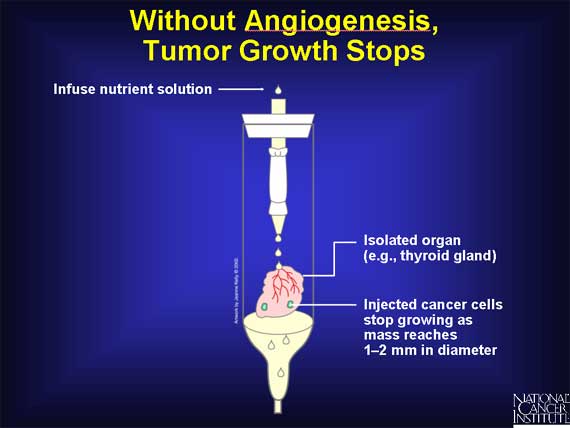|
In early experiments, researchers asked whether cancer growth requires angiogenesis. Scientists removed a cancerous tumor from a laboratory animal and injected some of the cancer cells into a normal organ removed from the same strain of animal. The organ was then placed in a glass chamber and a nutrient solution was pumped into the organ to keep it alive for a week or two. Scientists found that the cancer cells grew into tiny tumors but failed to link up to the organ's blood vessels. As a result, tumor growth stopped at a diameter of about 1-2mm. Without angiogenesis, tumor growth stopped.

< Previous | Index | Next Slide > |